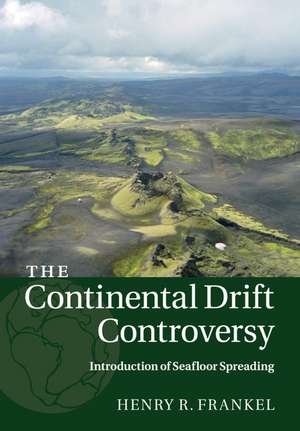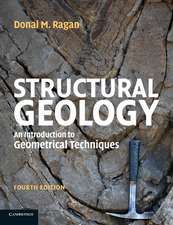The Continental Drift Controversy: Volume 3, Introduction of Seafloor Spreading
Autor Henry R. Frankelen Limba Engleză Paperback – 10 aug 2016
Preț: 393.69 lei
Preț vechi: 427.92 lei
-8% Nou
Puncte Express: 591
Preț estimativ în valută:
75.33€ • 79.07$ • 62.53£
75.33€ • 79.07$ • 62.53£
Carte disponibilă
Livrare economică 20 martie-03 aprilie
Livrare express 06-12 martie pentru 42.39 lei
Preluare comenzi: 021 569.72.76
Specificații
ISBN-13: 9781316616123
ISBN-10: 1316616126
Pagini: 494
Ilustrații: 24 b/w illus. 13 maps
Dimensiuni: 170 x 245 x 25 mm
Greutate: 0.78 kg
Editura: Cambridge University Press
Colecția Cambridge University Press
Locul publicării:Cambridge, United Kingdom
ISBN-10: 1316616126
Pagini: 494
Ilustrații: 24 b/w illus. 13 maps
Dimensiuni: 170 x 245 x 25 mm
Greutate: 0.78 kg
Editura: Cambridge University Press
Colecția Cambridge University Press
Locul publicării:Cambridge, United Kingdom
Cuprins
Introduction; 1. Extension and reception of paleomagnetic/paleoclimatic support for mobilism, 1960–6; 2. Reception of the paleomagnetic case for mobilism by several notables, 1957–65; 3. Seafloor spreading, the first version: Harry Hess develops seafloor spreading; 4. Another version of seafloor spreading: Robert Dietz; 5. The Pacific as seen from Scripps Institution of Oceanography: Menard's changing views about the origin and evolution of the ocean floor; 6. Fixism and Earth expansion at Lamont Geological Observatory; References; Index.
Recenzii
'Henry Frankel has a fine eye, and ear, for the interlocking aspects of the emergence, recognized evolution, and acceptance of that flowering of a worldwide phenomenon, continental displacement.' Robert L. Fisher, Emeritus Professor, Scripps Institution of Oceanography, University of California, San Diego
'Detailed and painstakingly researched, this account is the culmination of the author's research into this topic over more than thirty years. It is difficult to imagine a more comprehensive analysis of the relevant literature and of the attitudes of the scientists involved.' Fred Vine, Emeritus Professor, University of East Anglia
'This is an incredible book - the most interesting account of history that I have ever read. It will be a classic: the scholarship is exhaustive, it is well written and has an excellent historical background, drawing the reader into the whole story.' John G. Sclater, Distinguished Professor, University of California, San Diego
Praise for the 4-volume collection: '… an unparalleled study of remarkable depth, detail and quality of a key development in our ideas about how the Earth functions … because Frankel draws on his extensive oral historical work with the key players in the development of plate tectonics, this is a study which can never be repeated in terms of its proximity to the events narrated, so many of those key players now being deceased.' Progress in Physical Geography
'Detailed and painstakingly researched, this account is the culmination of the author's research into this topic over more than thirty years. It is difficult to imagine a more comprehensive analysis of the relevant literature and of the attitudes of the scientists involved.' Fred Vine, Emeritus Professor, University of East Anglia
'This is an incredible book - the most interesting account of history that I have ever read. It will be a classic: the scholarship is exhaustive, it is well written and has an excellent historical background, drawing the reader into the whole story.' John G. Sclater, Distinguished Professor, University of California, San Diego
Praise for the 4-volume collection: '… an unparalleled study of remarkable depth, detail and quality of a key development in our ideas about how the Earth functions … because Frankel draws on his extensive oral historical work with the key players in the development of plate tectonics, this is a study which can never be repeated in terms of its proximity to the events narrated, so many of those key players now being deceased.' Progress in Physical Geography
Notă biografică
Descriere
This book describes the expansion of the land-based paleomagnetic case for drifting continents and recounts the golden age of marine geoscience.










